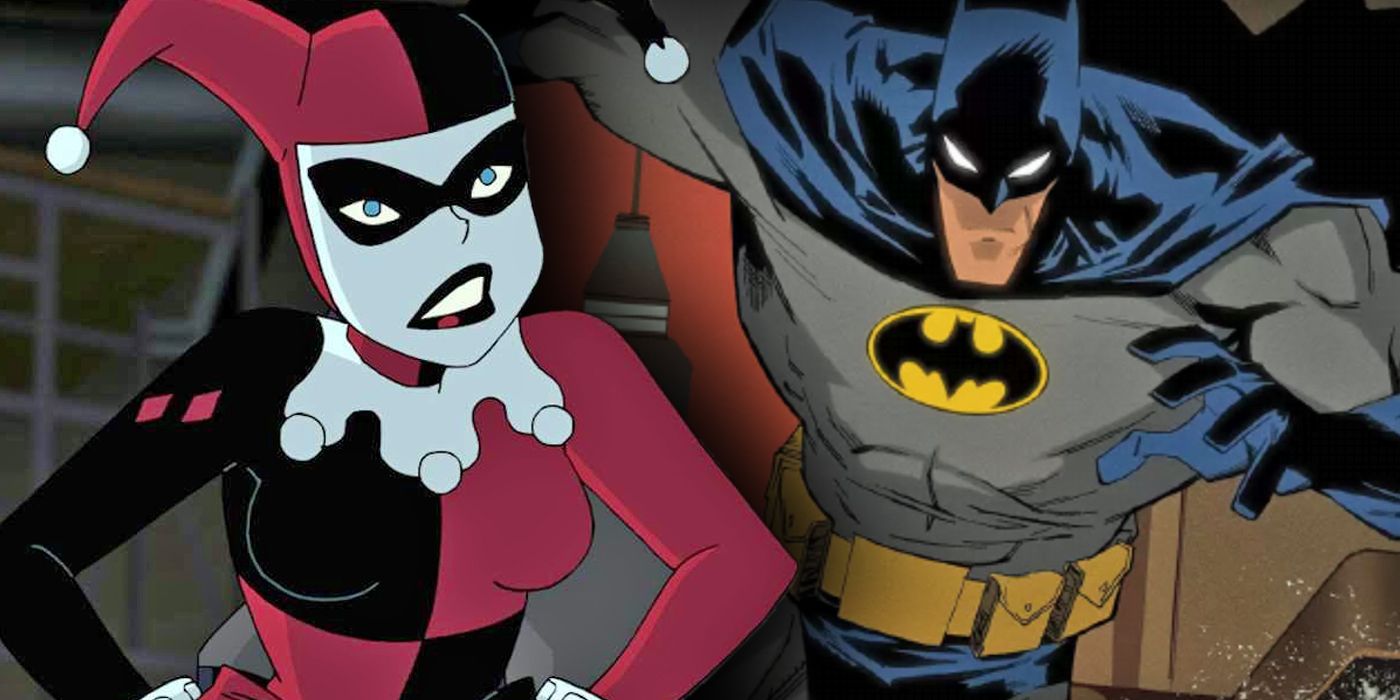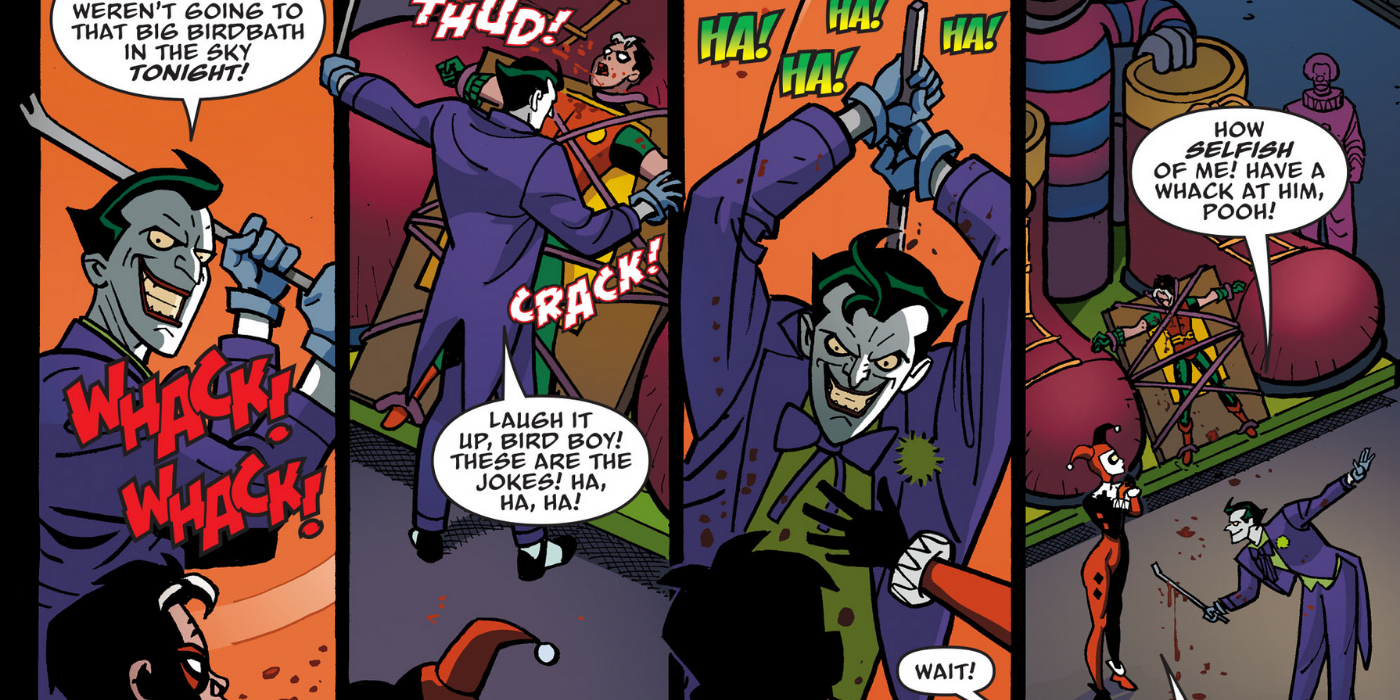WARNING: The following contains spoilers for Batman: The Adventures Continue #12 by Alan Burnett Paul Dini, Ty Templeton, Monica Kubina and Josh Reed, on sale now.
In recent years, Harley Quinn has widely been known as an antihero. In Suicide Squad and especially Birds of Prey, she comes into her own as someone who wants to do some good in the world. In the latter, she defeats Black Mask, but in doing so, she doesn't show the same restraint that a hero like Superman would. Likewise, in Batman and Harley Quinn, she helps the Caped Crusader and Nightwing in their quest to stop Poison Ivy and Floronic Man.
Her popular cartoon series initially follows Harley's quest to become a super villain, but the second season shows her gradual progression from an aspiring criminal mastermind to a flawed hero. In the comics, Harley's characterization has made a similar shift; these days, she's much more admirable than she is nefarious. In every platform, Harley has traded her career as a villain for one as an antihero. Based on Harley's actions in the latest issue of Batman: The Adventures Continue, it's fair to argue that, chronologically, her character growth began the night she helped save Jason Todd's life.
Jim Starlin and Jim Aparo's "A Death In The Family" is one of the most iconic Batman stories of all time, and Batman: The Adventures Continue #12 reimagines this memorable story by adding a dynamic ingredient to the mix — Harley Quinn. Because she didn't debut until 1992, four years after fans voted for the death of Jason Todd, Harley didn't play a role in the original arc. But this issue significantly alters the course of events by having Harley at the Joker's side while he's beating Jason with a crowbar. At first, it seems like Harley's presence won't affect the outcome; she plays along with the Joker's game by putting on a doctor's coat and diagnosing Jason with "violent psychopathic tendencies" and "destructive power fantasies," both of which stem from Robin's association with Batman. The Clown Prince of Crime eats Harley's performance right up and uses it as a justification for taking Jason off the board once and for all. But it's quickly evident that Harley isn't comfortable with his brutality.
As soon as the Joker starts hitting Jason with a crowbar, Harley's face is filled with concern. When the Clown Prince of Crime starts to lose control and batter Jason, Harley steps in by crying, "Wait!" She thought beating Jason up was acceptable, but Harley thinks killing the boy is out of line. The Joker dismisses Harley's feelings and tells his goons to carry her out of the building. Though he resumes his assault on Jason, Harley stops him long enough to give Batman the time he needs to arrive and stop the Joker.
Alfred, recapping the scene, says that Harley offered to help Batman stop the Joker when the Dark Knight saw her outside. Though the Caped Crusader doesn't accept the suggestion, it's important to note that she tries in the first place. For the Joker's partner in crime, this moment can be considered the first substantial step in her evolution as an antihero in the DC Animated Universe. She may not have directly saved Jason's life, but she delayed the beating, so she at least deserves to be credited with a major assist.
There are a few potential starting points of Harley's change away from being a villain. She has stood up to, and directly opposed, the Joker several other times. Her work with the Suicide Squad and the Birds of Prey are also valid choices.
Harley has also fought alongside the Justice League, and these occasions serve as fitting examples of her heroism. But at least in the DC Animated Universe, Harley first set off on this journey when she stopped the Joker from killing Jason and, by extension, she altered the course of DC history.



